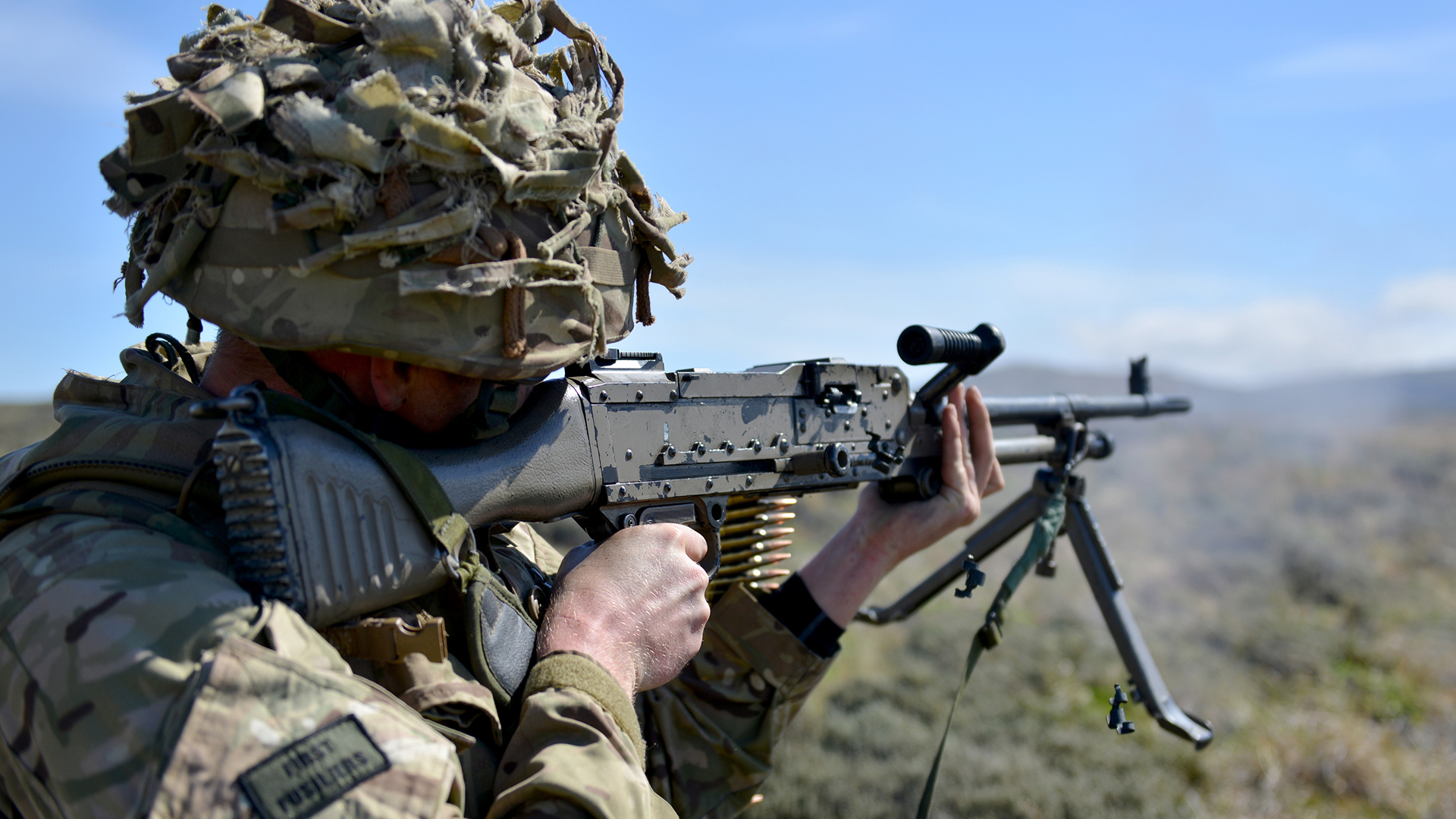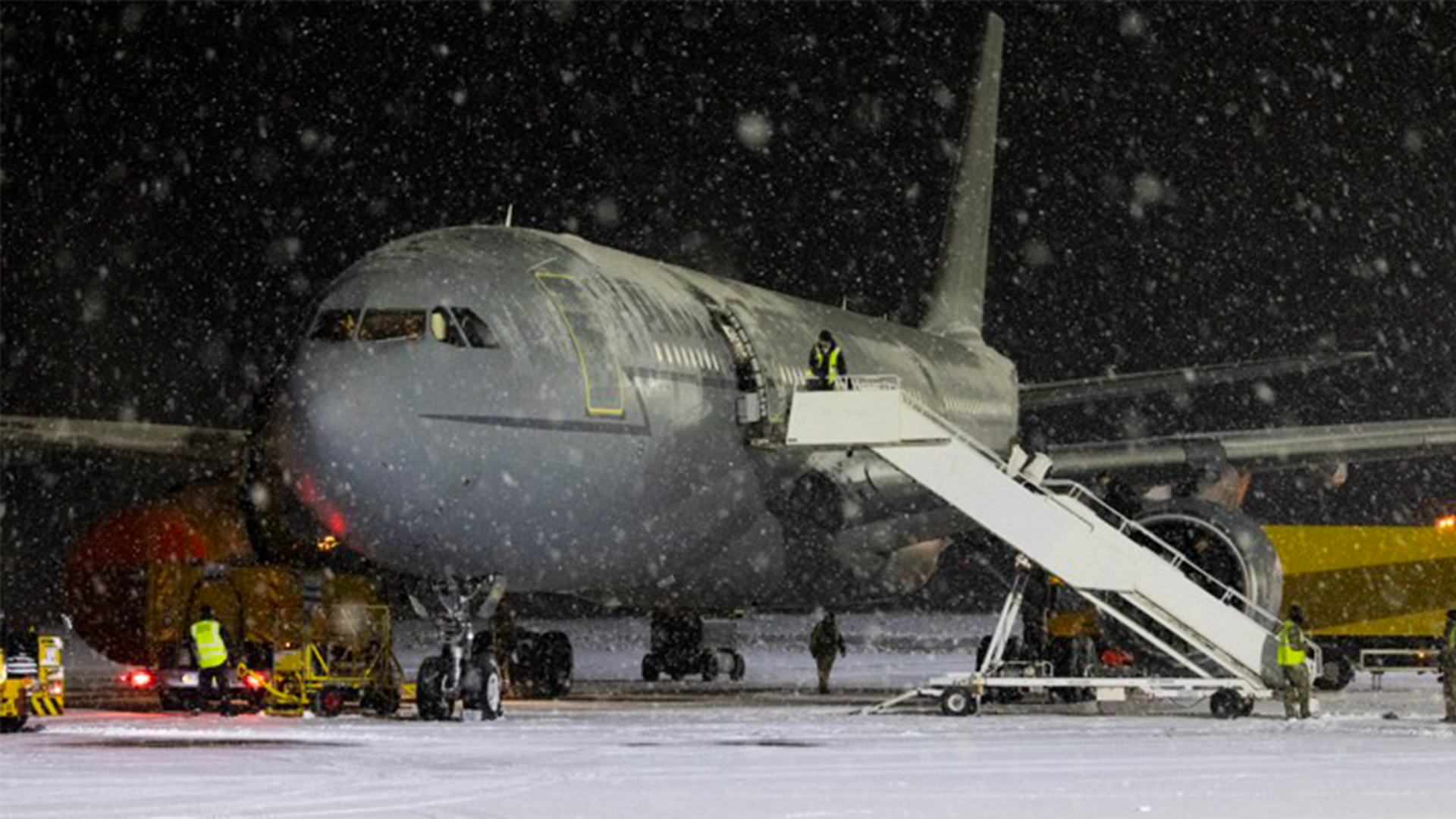
Summer here, winter there: How the RAF keeps flying when it's freezing in the Falklands

While Europe is still enjoying the summer, it's winter in the South Atlantic, creating some icy obstacles to be overcome for the Armed Forces personnel deployed there.
Within the British Forces South Atlantic Islands, Mount Pleasant Airfield on East Falkland is exposed to some dramatic and challenging conditions at this time of year.
This climate, which can see temperatures fall well below zero, makes operational management of the RAF airfield critical.
The Airfield Support Mechanical Transport team
Members of 1312 Flight, which is part of in 905 Expeditionary Air Wing, are responsible for maintaining and clearing the aircraft at MPA.
Chief Technician Warren Burns offered a valuable insight into his Falklands deployment on 1312 Flt over the winter period last year.
"Our main effort is to deliver Quick Reaction Alert air-to-air refuelling," he explained.
"We also support search and rescue missions, maritime radar reconnaissance and medical evacuations. We are on call 24/7."
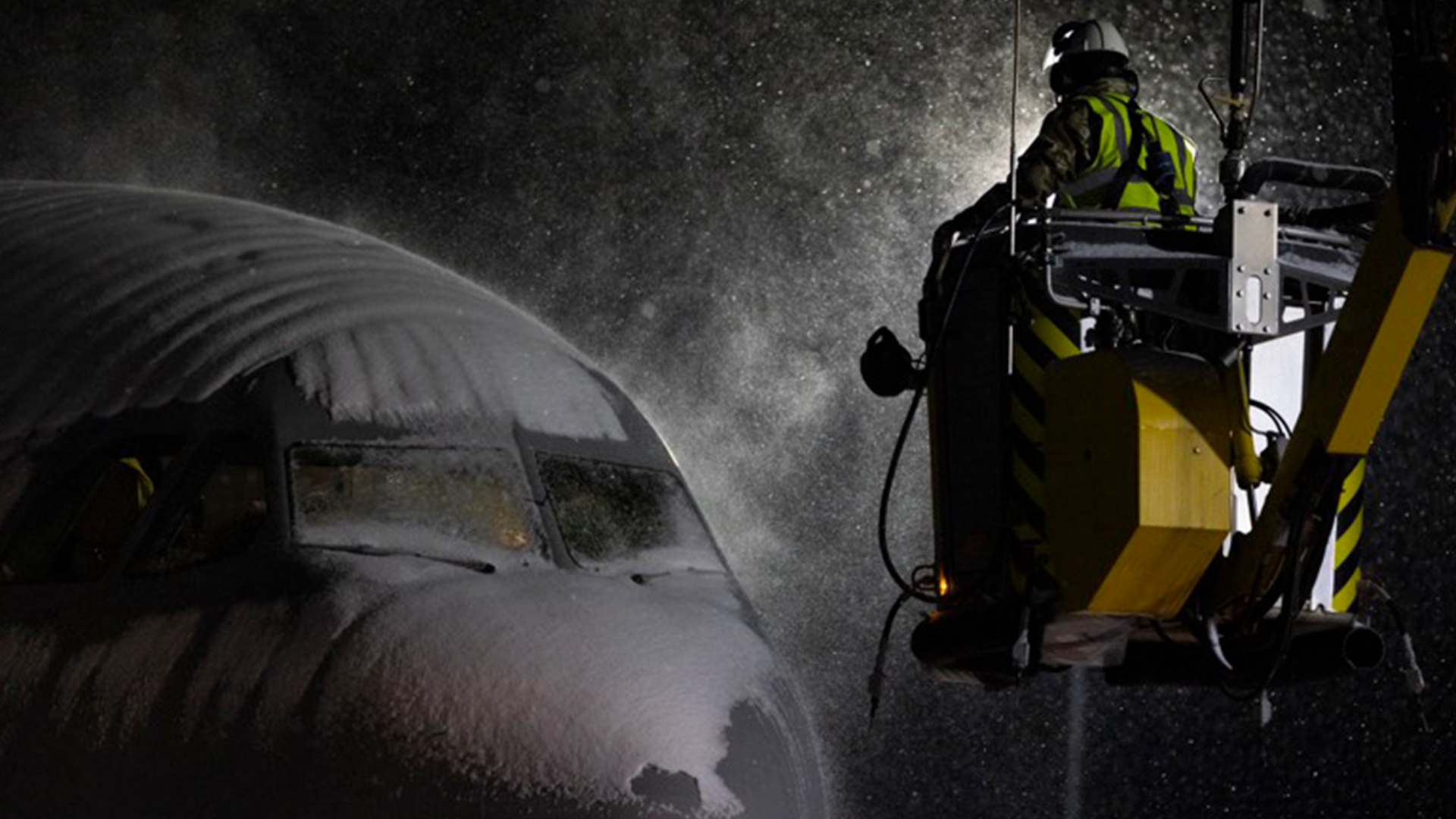
Adverse conditions
When asked about the specific weather conditions, he replied: "It is very dramatic. Weather can change rapidly, sometimes only 10 minutes apart.
"You can get temperatures down to -4°, but with the wind chill it feels like -15°."
Despite the adverse conditions, the Voyager tanker needs to be kept operational and, in order to achieve this, CT Burns pointed out how members of 1312 Flight are sometimes working for several hours on the aircraft.
"So it is important to manage and prevent cold injuries within the team," he said.
"But you still have to be timely in completing the task at hand. Time management and resource management become evermore critical.
"It can only take one piece of equipment to fail, and that could affect the delivery."
He also described how there was only a small window of opportunity for the aircraft, once it had been de-iced to take off, because if it snowed again in the meantime, the process would have to be repeated.
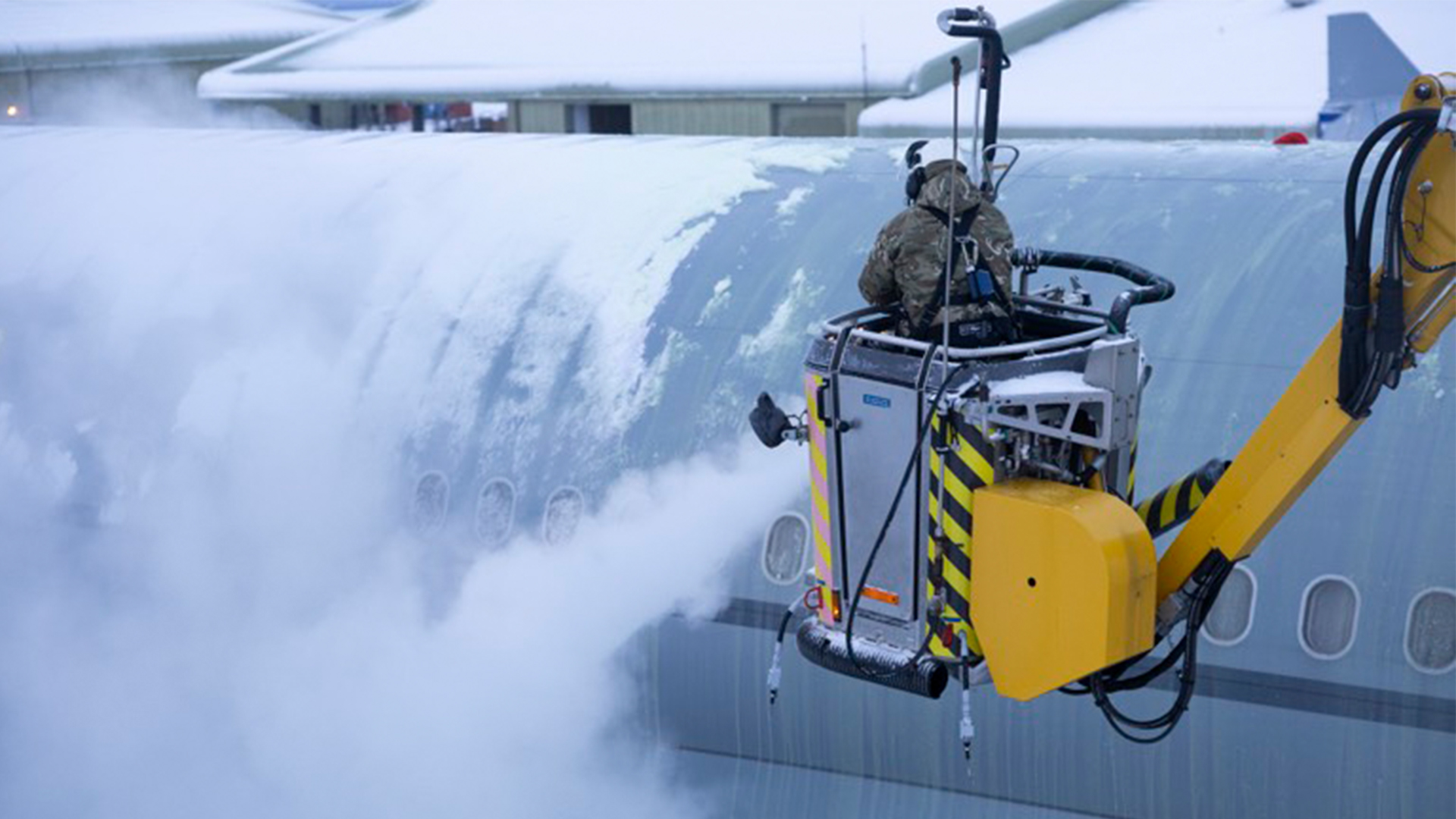
More training needed
CT Burns said another difference between operating in summer compared to winter in the Falklands was the amount of training his team members require.
"Demands are higher and the team have to be a lot more reactive," he said of the winter period.
The Airfield Support Mechanical Transport team on 1312 Flight is one of the largest contributors to air operations, especially in winter conditions where it provides the snow-clearance vehicles.
Another RAF NCO identified only as Corporal Martin explained how he and his colleagues had to be highly reactive and prioritise tasks depending on 905 Expeditionary Air Wing's agenda.
"Equally, the snow and ice engineers are always on call to fix and repair vehicles in a timely manner. They deal with everything airside-related." he added.
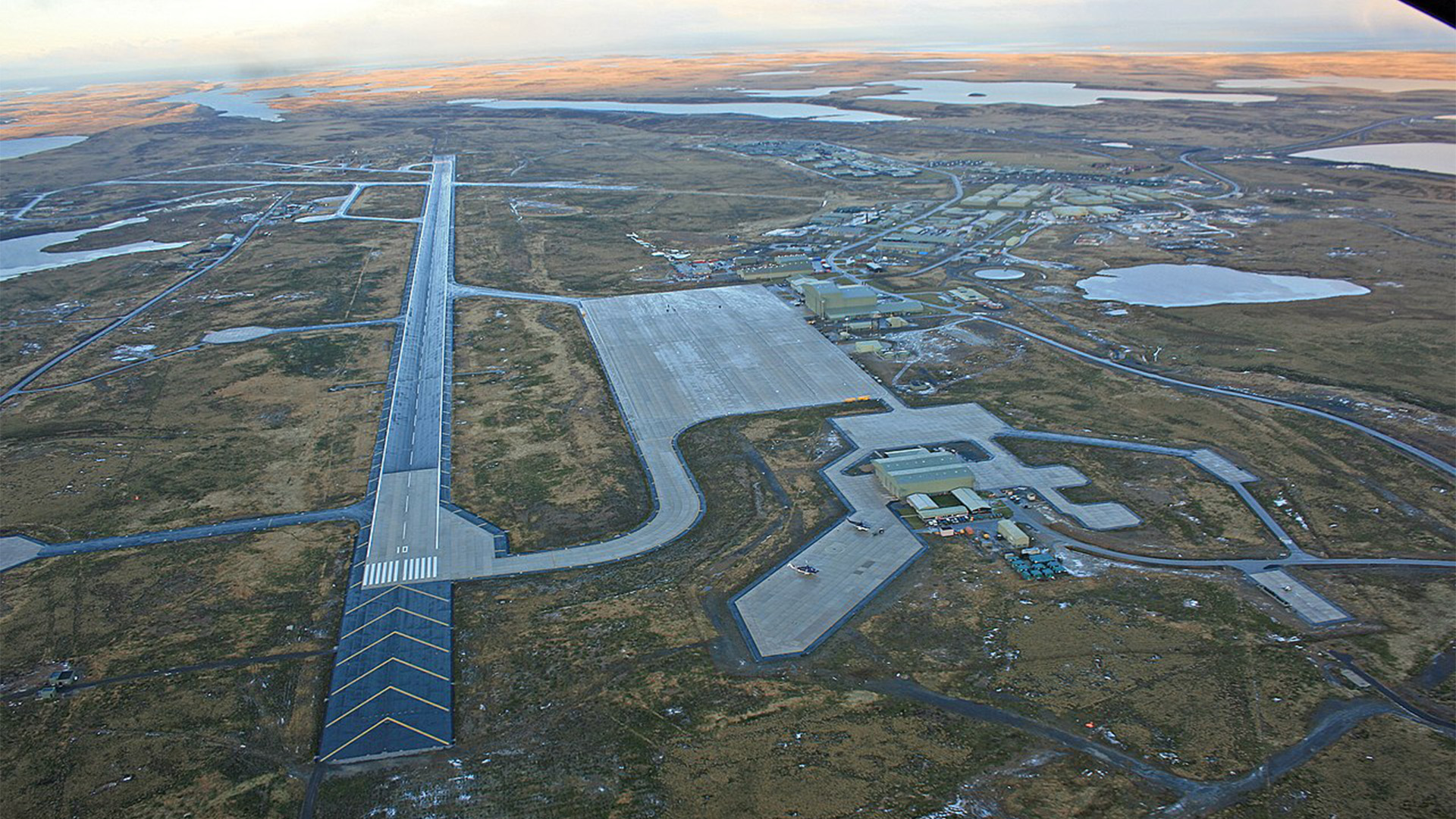
Four decades of history
The wider Mount Pleasant Complex has been an RAF fighter and transport presence in the Falkland Islands for the past 40 years.
It's located around 33 miles southwest of the capital, Stanley, and was officially opened in May 1985 and became operational the following year.
As of May this year, 1435 Flight operates four Typhoon FGR4 fighters, while 1312 Flight has the Voyager tanker and an A400M Atlas transport aircraft.
The RAF personnel on the ground fulfil a range of roles, from radar operators to weapons technicians, in support of the Typhoons, and Mount Pleasant Complex also facilitates civilian flights from the airfield.
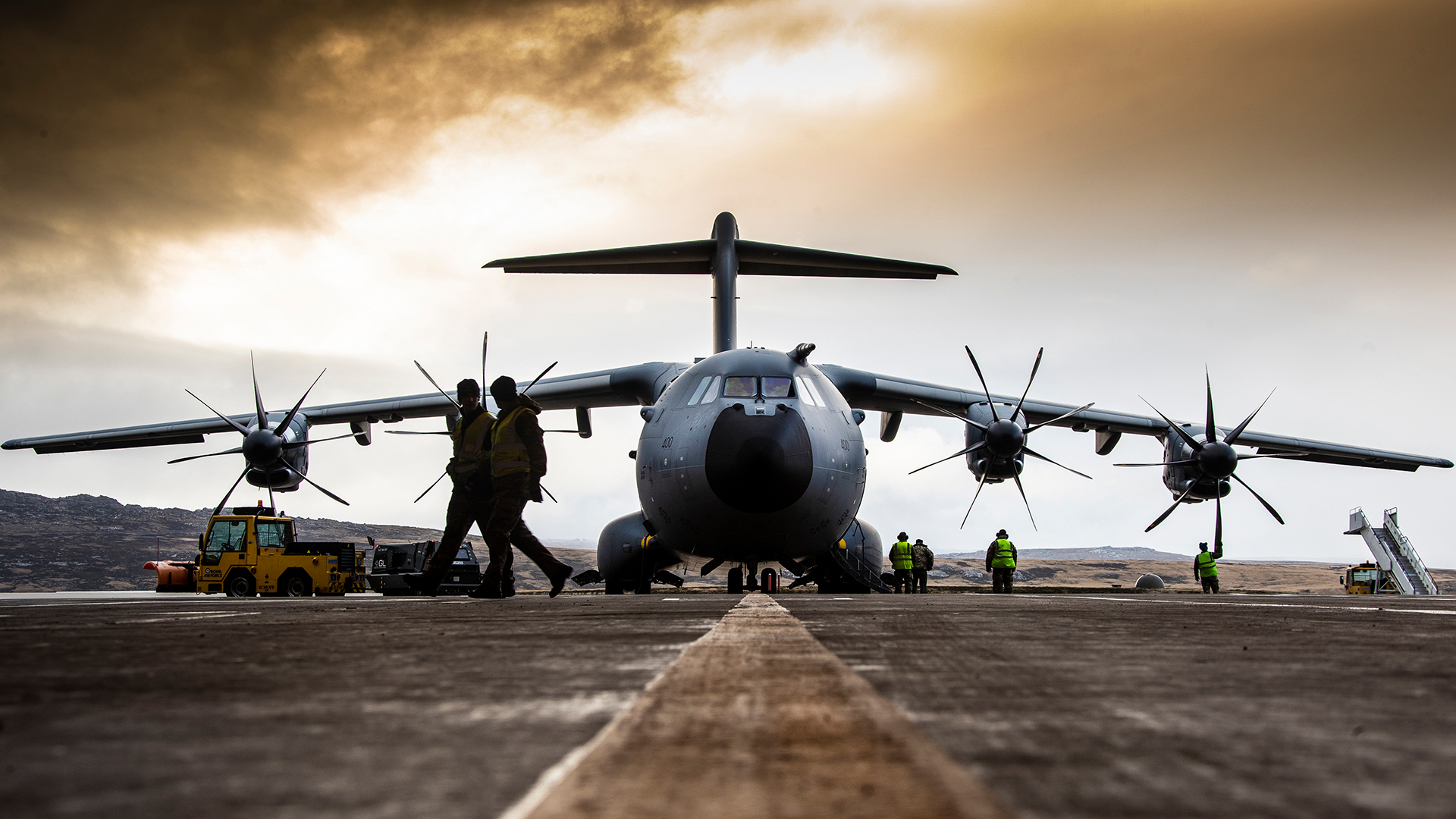
Soldiers too
The UK has maintained an active military presence in the Falkland Islands since the war between Argentina and Britain which lasted from 2 April to 14 June 1982 and claimed 255 British lives.
It has invested heavily in the islands' defences, including the construction of Mount Pleasant.
The British Army also provides a constant garrison in the Falklands to support the Royal Navy and Royal Air Force with air defence and infantry specialists.
The austere terrain and challenging climate can provide unique training opportunities for soldiers as well as RAF personnel.
